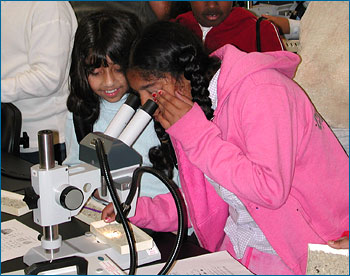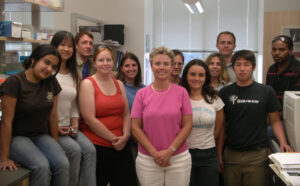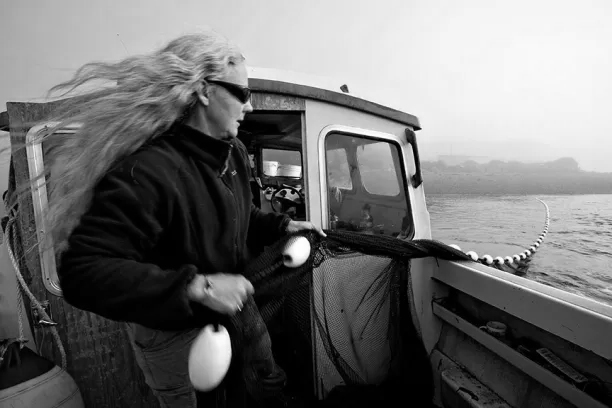There are many different ways to get into science. The scientific community has a place for everyone, including the total novice. If you’re interested in science, the best place to start is by learning as much as you can. Aside from classes and books, there are magazines that explain recent scientific findings to a popular audience (such as Discover, New Scientist, and Natural History) or, if you feel up to it, you can even try the scientific journals at your library (Science and Nature are two well-respected options). But science isn’t just about book learning; you can get involved in the activities of science in many ways:
- volunteer at a nature or science center
- work with a non-profit that promotes science
- attend a science cafe (where a scientist gives an informal talk about his or her work)
- try out a summer science program
- ask to shadow a scientist on the job
- explore the natural world on your own — after all, science is all around us

If you’re really serious about science, you might want to pursue a scientific career. Students can talk to their guidance counselors or advisors about how to prepare for this career path. With a high school diploma or a college degree, you can work for a government agency, at a university, or in industry. Whether you’re tagging fish, running lab experiments, or analyzing data on a computer, you’ll be contributing to the larger body of scientific knowledge. However, if you want more control over what you study, you may need more training. Typically (though not always!), scientists who want to run their own research continue their studies to complete a Masters degree, a Ph.D., and possibly a postdoctoral research appointment (commonly called a postdoc), which provides recent Ph.D. recipients with advanced training under the direction of a mentor).
Traditionally, bachelors and masters students focus on learning the large body of “background” knowledge required for research, while Ph.D. students and postdocs focus on learning how to conduct scientific research. Doing science is rather different from most science classroom experiences: it can be difficult to figure out what questions to ask and how to go about studying them. A Ph.D. and postdoc allow you to learn how to do science under the supervision of a senior scientist who can guide you through the whole process, making all the twists, turns, and dead ends of science easier to navigate until you get the hang of doing it on your own. Many scientists see a Ph.D. as a credential that certifies its holder’s ability to conduct scientific research. The Ph.D. process can be grueling, but the rewards of scientific inquiry can make it worthwhile!

Though many scientists today have advanced training, it is possible to work your way up to a research-focused position even without a Ph.D. For example, physicist and chemist Michael Faraday had very little formal schooling. He was apprenticed to a bookbinder at fourteen and learned science by reading books he bound. Fascinated by an article he read on electricity, he began performing experiments using an electrostatic generator and a weak battery he built himself. He started attending lectures on physics and chemistry, and was particularly enthralled by a series of lectures given by the then-prominent chemist, Sir Humphry Davy. Faraday took notes at these lectures and after the series finished, sent a copy to Davy along with a letter asking for a job in his lab. Davy was impressed with Faraday and as soon as he had an opening, hired Faraday. Faraday became one of the most influential scientists of the 19th century, laying the groundwork for James Clerk Maxwell’s theory of electromagnetic radiation — and all without any college degree.

A more modern example of an unusual path into science is the route taken by aquatic biologist Alexandra Morton. Following a childhood dream to study animals, she received her bachelor’s degree and went straight to studying sound production and communication in dolphins and orca. In 1981, she co-founded a non-profit organization to support her orca research off the coast of British Columbia. After the introduction of salmon farms to the area in 1987, signs of ecological distress appeared and the orca vanished. Morton unsuccessfully attempted to get the government involved and then added studying the effects of salmon farming to her research activities. Her research has revealed dietary differences between transient and resident orca populations and has documented a rise in sea lice associated with salmon farming. A graduate degree is not a requirement to conduct important scientific research!
Though some scientists get into science in unexpected ways, most go the traditional route. Even Jane Goodall, who began studying chimps in the wild without a Ph.D., ultimately decided that the degree would help her to continue her studies of chimps and be taken more seriously by the scientific community. The majority of the scientists are like Goodall; they see the benefits of a formal education. Still, this isn’t the only way to get into science. Formal training is important, but it’s not absolutely essential. Faraday and Morton both forged their own paths into science based on their knowledge and skills. Ultimately, though it may take time and the benefit of hindsight, science judges its participants by the quality of their ideas and research, not by their credentials.
There are lots of ways to get involved with science as a non-professional. Here are just a few:
